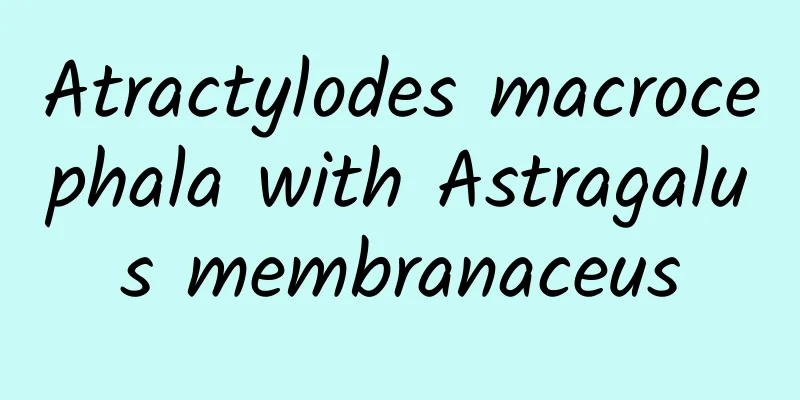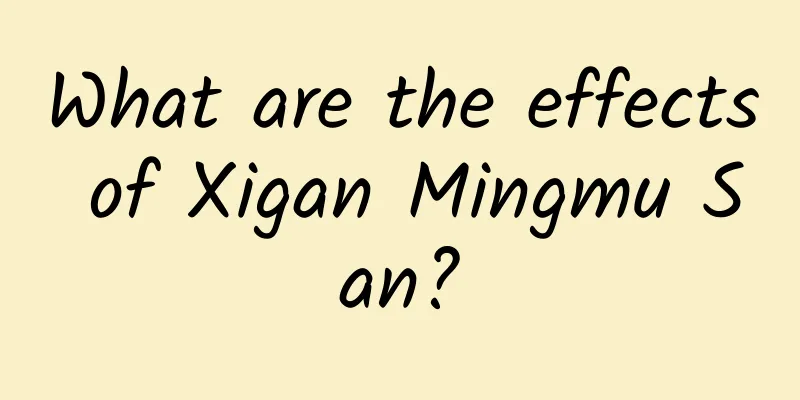Atractylodes macrocephala with Astragalus membranaceus

|
Atractylodes and Astragalus are both Chinese medicinal materials. Atractylodes has the effects of improving eyesight and removing dampness. For people who sit in the office for a long time, it can effectively relieve eye soreness and pain and remove moisture from the body. Astragalus has the effect of nourishing the middle and replenishing qi, which can enhance the body's vitality and play a role in strengthening people's bodies. Atractylodes and Astragalus are both good medicines, so is it okay to combine Atractylodes with Astragalus? When Astragalus is combined with Atractylodes, it can invigorate Qi and eliminate dampness. If patients with chronic kidney disease develop symptoms of Qi excess and dampness, with symptoms including shortness of breath, fatigue, drowsiness in the limbs, loose or sticky stools, turbid or foamy urine, fat tongue, white, yellow, greasy or moist tongue coating, and a deep, slippery or wet pulse, they need to invigorate Qi and eliminate dampness. When Atractylodes and Astragalus are used together, Astragalus can nourish the Qi of the lungs, spleen and kidneys, spread the lung Qi to benefit the water channels, nourish the spleen Qi to stop the source of dampness, and help the kidney's Qi to be transformed so that the dampness can be removed. Furthermore, the pungent, bitter and warm properties of Atractylodes can transform the dampness and turbidity that are retained inside. Therefore, the combination of the two medicines is an excellent remedy for supporting the acquired constitution and eliminating dampness. How to take Atractylodes and Astragalus It is best to boil it once with water and then once with wine, and then collect it into a paste. You can scoop a little each time and rinse it with hot water. One of the very important functions of Atractylodes lancea is drying dampness. Effects of Atractylodes and Astragalus Atractylodes contains volatile oil, the main component of which is a mixed crystal of atractylodes alcohol and atractylodes alcohol; it also contains a small amount of atractylodes ketone and vitamin A. It has the effects of fumigation disinfection, lowering blood sugar, sedation, liver protection and bile secretion, and anti-ulcer. Vitamin A can prevent night blindness and keratomelia caused by vitamin A deficiency. Atractylodesin and cypermethrin are active antiviral ingredients. Astragalus has a unique and important effect on chronic kidney disease. The effect of Astragalus is not only to replenish Qi, it can also strengthen the body, regulate Qi and blood, replenish and unblock, and is not greasy. In clinical practice, if the appropriate combination of Astragalus is used according to the patient's pathological condition, it can have the best effect, which is very beneficial for controlling and delaying the development of chronic kidney disease. |
<<: Is Qi deficiency the same as kidney deficiency?
>>: Self-prepared roasted Astragalus
Recommend
The efficacy and function of Gymnema sylvestre
Gymnema sylvestre is a traditional Chinese medici...
Health Science | Rubbing your eyes is so harmful?! Stop it!
(Statement: This article is from Hubei Tiantian P...
Why is the second child always smarter than the first child? The truth hurts...
We often hear this description from parents of se...
The efficacy and function of Polygonum multiflorum leaves
Polygonum multiflorum leaves are a famous traditi...
The efficacy and function of small-leaved rock incense
Small-leaved climbing rock is a medicinal materia...
Today in Science and Technology History | March 20, 1800 Scientist Volta invented the first battery in human history
One of the qualities of a great scientist is his ...
The efficacy and function of hairy-leaf yellow wolfberry
Although Western medicine and Western drugs are m...
Benefits of drinking water with Centella asiatica
Nowadays, many people pay more attention to Chine...
Effects and uses of ice hemp seeds
Castor can relieve the symptoms of constipation, ...
The efficacy and function of Erlang Sword
Nowadays, our living standards are constantly imp...
Why is this photo worth 10 billion?
On July 11, 2022, the first color picture of the ...
Can Motherwort Cure Inflammation?
I believe that there is no female friend who does...
What! Can we see the Northern Lights in the country?
I believe everyone has seen photographs of the au...
Should I open the windows? — A bizarre COVID-19 outbreak
After three years of fighting the epidemic, weari...
China's cross-border e-commerce B2B market is expected to reach 13.9 trillion yuan in 2025
The report "Digital Platforms Help Small and...









